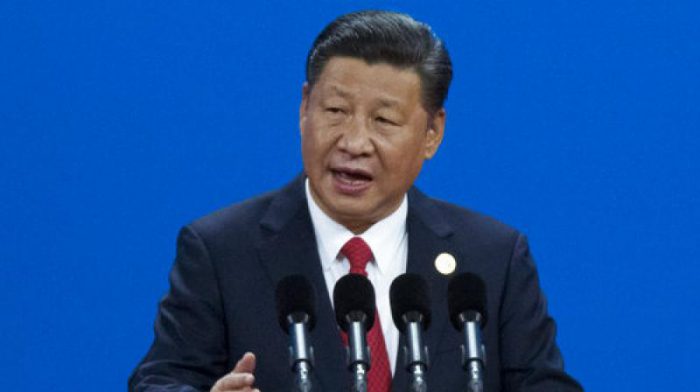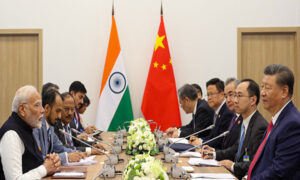
File Picture Courtesy : The Asian Age
The Chinese move to build the CMEC – China Myanmar economic corridor should not have come as a surprise to India as the Chinese have been busy creating a constituency assiduously within the society and political power structure in Myanmar right from the Army coup in 1962. The sizeable presence of the ethnic Chinese Kokang in the West bordering China and the Chinese business community all over China helped. More importantly during the entire period when Myanmar isolated herself from the world and followed what was declared to be the “Burmese way to socialism” it was China that provided critical logistics, training and military hardware to the Army under General Ne win ( whose mother was Chinese) and political support restraining International pressure on the junta.
Equally important was the quiet Chinese backing of the junta in protracted conflicts with ethnic insurgencies in the North and south Burma during 1948- 1989 and even later by its deft policy of not allowing any group access to the” Arms bazar” of south East Asia large enough to enable them to overthrow the government of Myanmar in their lands. During 2011 – 14 the FDI of USD 5 billions that Myanmar received came primarily from China, Hong Kong and Thailand.
This period also saw completion of Chinese strategic initiatives of construction of the 1060km long gas and oil pipelines from Kyaukphyu on the western coast in Rakhine to Kunming in China and commissioning of the pipelines in 2013 and 2015 have enabled China to register her firm strategic footprint in Myanmar. Rakhine and the Bay of Bengal Region have thus become areas of vital importance for China as it receives bulk of her middle East Oil and gas at a much lesser transport costs through Kyaukphyu now on which depends the economies of south China. These strategic compulsions determine China’s Myanmar policy.
Myanmar is presently in a period of what is called ” transition” somewhat romantically as it is to become a democracy eventually. The fact is that it’s a dream as under the present Constitution framed in 2008 by the Junta the army still calls the shots as it controls the strategic ministries of Defence ,Border affairs and Home and holds 25% of seats in central legislature unthinkable in a democracy. And in Tatmadaw, the army command China has a strong constituency.
This power structure is unlikely to change soon because unlike the Indian Army, the Burmese Army emerged as a revolutionary army fighting the Japanese though formed initially after Japanese occupation with the latter’s support; and the ethos of the Army was political and not wholly professional as it was led by those like Ne Win who rose not from the colonial army but from the Burmese National Army formed during the second world war and it retained its political role since 1948 when Burma attained freedom.
China stood by Myanmar all through the Rohingya problem right from 1978 when, faced with state sponsored violence the Rohingyas started moving out of Myanmar to seek refuge in Bangladesh and elsewhere in south east Asia. Even after August 25 Army crackdown on the Rohingya Muslim seperatist insurgents which forced 620000 Rohingyas to cross over to Bangladesh , China prevented UN Security council condemnation of Myanmar and opposed a similar resolution of the UN Human Rights Commission earlier in this month. Interestingly India, Japan and seven other countries abstained also.
This must have come as a great relief to NLD led Government of Daw Aung San suu Kyi. It is thus an opportune moment for China to launch the China Myanmar economic corridor which will begin from Kunming in China and cover Mandalay, Yangon and the special Economic Zone at Kyaukphyu on the Rakhine coast. The Corridor approach is not new as it was tried in 2004 in south east Europe involving 8 countries with the support of the world bank and met with reasonable success.
A ” Corridor” is a means to Regional Economic integration and requires a common Regional transport and other productivity and mobility enhancing infrastructure such as power, telecom, internet, smooth trade facilitation, common financial services network which will build a common market and flow of Investment along the growth centres established along the Corridor.
In other words it’s a means to expand and deepen China Myanmar strategic economic cooperation on a long term basis and with the Myanmar Army support,the CMEC could certainly influence the course that Myanmar’s transition to democracy might take.
( The writer is a retired IAS officer of the Assam – Meghalaya cadre and has served as Scientific Consultant in the office of the Principal Scientific Advisor to the Government of India)


















